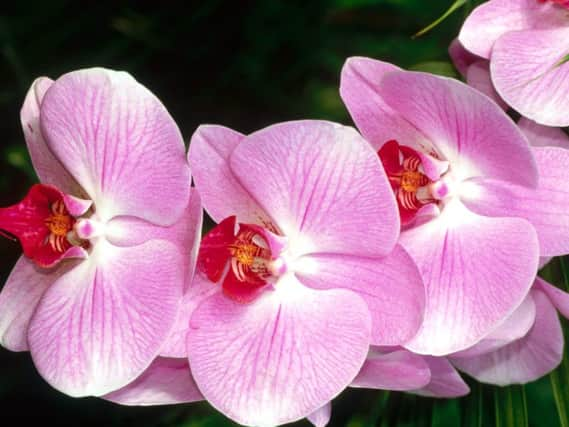BRIAN KIDD: Answers your questions and suggests jobs going into the second week in November


Q: I have had a beautiful moth orchid for 10 years. There are tiny flies around the plant so I applied diluted washing up liquid to control them, but I still find leaves with large, round damaged areas. JM, Purbrook.
A: The leaf marks have been caused by a drop of the washing up liquid being exposed to the sun. Buy the next-sized transparent pot and new orchid compost. Shake off all the old compost, dip the roots in rain water and repot. Then water with rain water. The flies are there because the old compost has rotted.
Advertisement
Hide AdAdvertisement
Hide AdQ: I have a fungus growing in the corner of my flower border and plants will not grow there. DB, Lee-on-the-Solent.
A: This isn’t fungus. It is an unusual moss and indicates the soil in that part of the border is poor, but there is a remedy. Once winter comes dig this area. Turn the soil right over leaving it in large clods. In spring fork in fish, blood and bone fertiliser – 4oz per square yard. This will transform the area.
Q: My neighbours’ shrubs have grown into my garden. I don’t want to upset them and am willing to prune them myself. Are there any rules? My son says I have to give the prunings back to my neighbour. LK, Milton.
A: The law is clear. You can cut back anything which crosses your boundary. To keep matters civil, tell your neighbour you are going to do this. Cut back to the boundary and bag the prunings. Don’t chuck them back on their side, but if there are fruits, say apples, offer them to your neighbour.
Advertisement
Hide AdAdvertisement
Hide AdQ: We have a polytunnel and have just taken out the tomatoes. What can we grow in there during the winter? G and JL, Fareham.
A: Spring hearting cabbages (variety Duncan) and lettuce especially bred for polytunnels. Dwarf peas are also a good option but not broad beans because you will be plagued with blackfly. Heat is not needed for the crops mentioned.
JOBS FOR THE WEEK AHEAD
• Plant garlic as long as you live in the south. Split the bulbs into segments called pips. Plant in well-drained ground, a place where manure was incorporated last year. A good one is Solent Wight, grown commercially on the Isle of Wight.
• Sow seeds of Virginian or night-scented stocks at the front of a border. They are hardy and will provide short plants about eight inches tall with small perfumed flowers next summer.
Advertisement
Hide AdAdvertisement
Hide Ad• Save egg cartons so when seed potatoes are ready to be set up you have plenty of containers in which to put them upright. Seed potatoes will be in garden centres in January.
• Clean the glass on the outside of the greenhouse. There are glass cleaners especially produced for this job or Flash, the floor cleaner, also does a good job.
• Put up polythene bubbled insulation in the greenhouse. Choose a dull day so you don’t get too hot or uncomfortable with the sun in your eyes. Plastic fixings can be bought for this job made specifically for metal glasshouses. but drawing pins and cardboard squares can be used in wooden structures.
• Remove weeds from alpine plant displays and afterwards top dress the soil surface with stone chippings. This prevents heart rot and keeps mud off the foliage.
Advertisement
Hide AdAdvertisement
Hide Ad• Buy seeds of fragrant exhibition sweet peas. They are often sown in November by serious growers. You will see if they are perfumed – it will say so on the seed packet. Exhibition types have long stems.
• Cut off leaves on wallflowers which have powdery mildew. Don’t leave the pieces lying around.
Got a question for Brian e-mail him by clicking here.